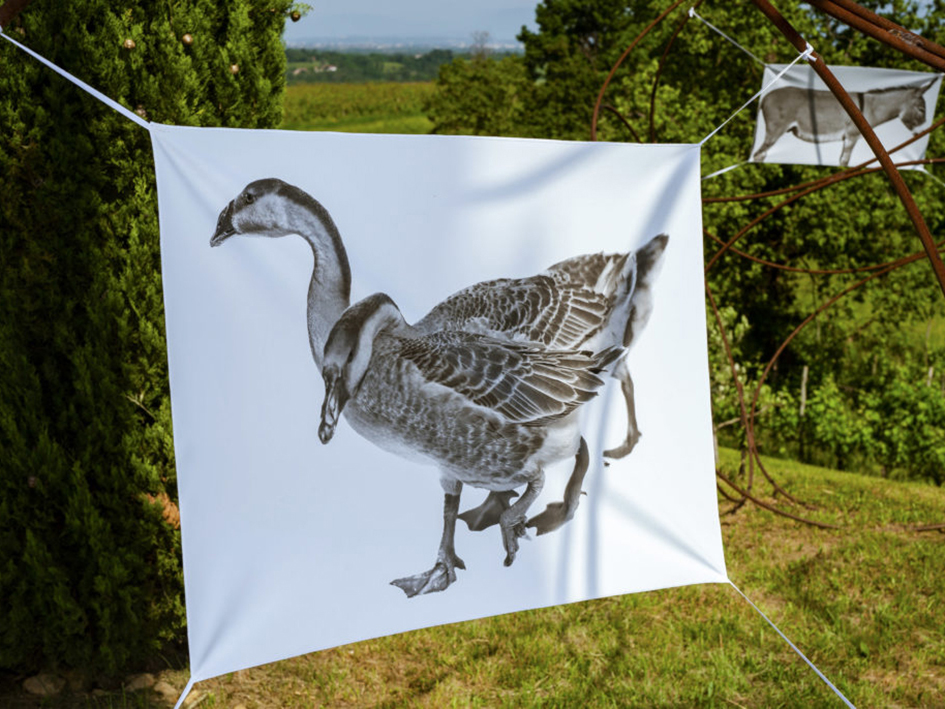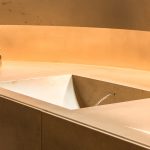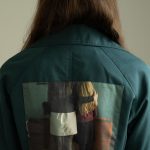Scroll down for English version
“The Architecture of Intelligence”
di Giuseppe Stampone
al Vigne Museum
Progetto a cura di RAVE East Village Artists Residency
Nel 2014, anno della costruzione del Vigne Museum, in occasione dei 100 anni del patriarca Livio Felluga, non è nato solo un grande esempio di sperimentazione artistica a architettonica ma è stato dato il via ad una storia che parla di natura, di persone di cultura e di nuove modalità di intendere la vita mettendo al centro il bene più prezioso che abbiamo, il Paesaggio.
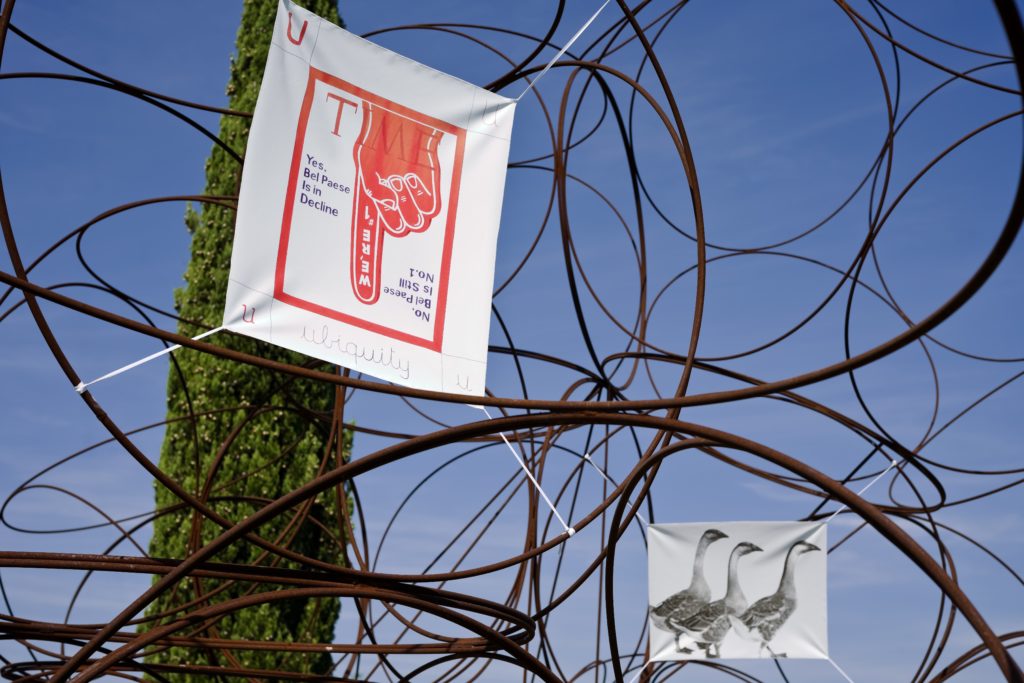
“The Architecture of Intelligence” by Giuseppe Stampone, ph. Dom Mimì
“Architecture of Intelligence”, intervento dell’artista Giuseppe Stampone in collaborazione con il foto reporter Dom Mimì (Domenico Stinellis), prodotto da RAVE_ East Village Artists Residency e realizzato appositamente per il Vigne Museum, si inserisce perfettamente all’interno della storia del Vigne Museum ed è testimone di due momenti fondamentali:
L’inaugurazione dell’Associazione Culturale VIGNE MUSEUM, l’organizzazione non profit fondata nel 2019 per sostenere e proseguire il percorso intrapreso cinque anni prima grazie al sostegno dell’azienda Livio Felluga, grazie a cui tutto è iniziato.
La restituzione, per la prima volta, della valenza di museo al Vigne Museum in quanto luogo che ospita l’ arte.
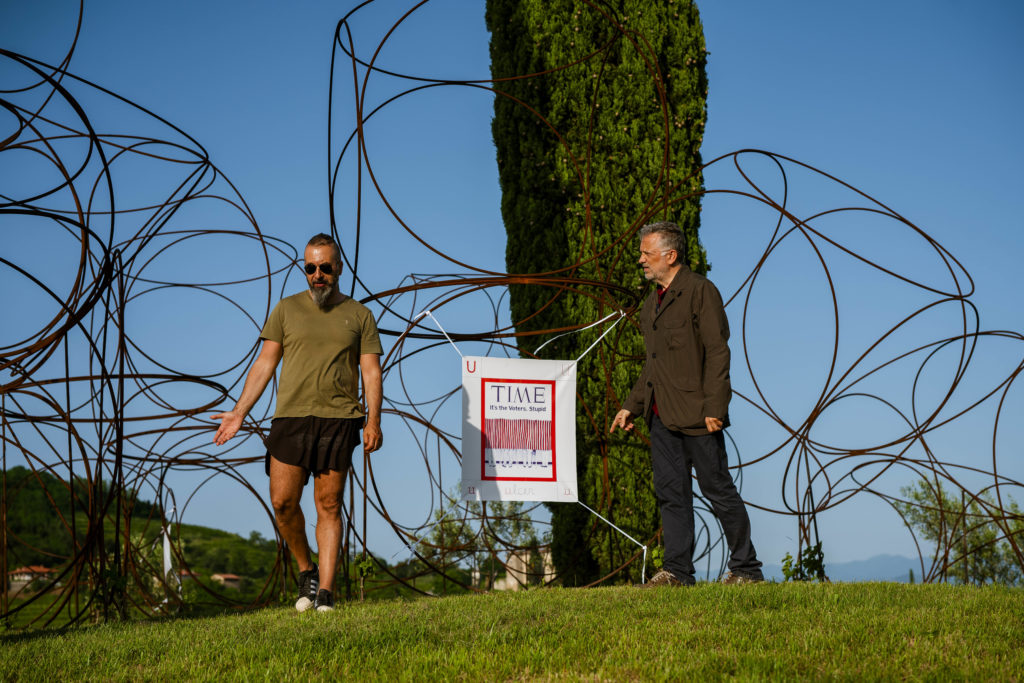
“The Architecture of Intelligence” by Giuseppe Stampone, ph. Dom Mimì
Le immagini scattate da Dom Mimì e i disegni di Stampone delineano un percorso che si declina dentro e attraverso i cerchi lavorando su cambi di prospettiva costanti. E’ una mostra ma allo stesso tempo il concetto stesso di mostra viene superato acquistando la dimensione di un laboratorio a cielo aperto. Lo confermano la volontà di lasciare segni evidenti, scala e utensili da lavoro, utilizzati per l’allestimento deciso “in site” in base all’armonia con la struttura e con il territorio circostante.
Le sue strutture di Yona Friedman sono dei luoghi veri e propri e hanno come obiettivo far scaturire commistioni, condivisioni e collegamenti fra le persone che li frequentano e che contribuiscono al grande e interminabile processo iniziato al momento della loro costruzione.
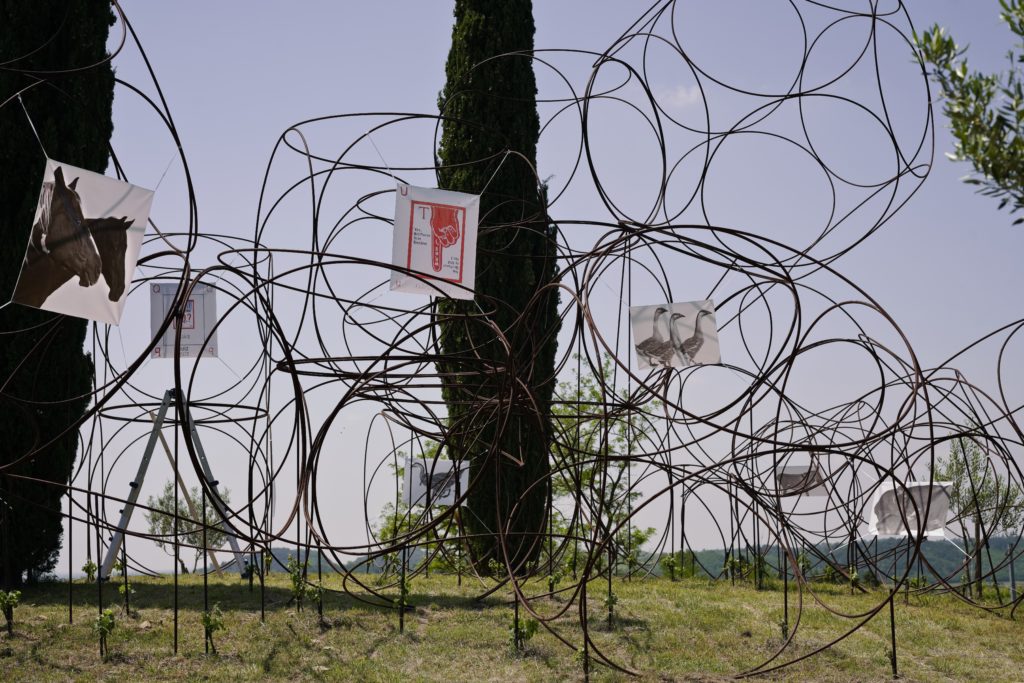
“The Architecture of Intelligence” by Giuseppe Stampone, ph. Dom Mimì
Con estrema coerenza Giuseppe Stampone, in “Archtecture of Intelligence”, evidenzia il concetto di network, di rete, collegamento fra il corpo e la mente, rete fra le persone, rete fra queste e il territorio in una mappa emozionale che risponde esattamente alla necessità delle architetture di Friedman, ossia di essere riempite di esperienze. Esperienze non fini a sé stesse ma generatrici di altre esperienze e altre reti.
Giuseppe Stampone [ GS ]: In “Architecture of Intelligence” il CORPO è inteso come corpo intimo, la MENTE diventa luogo privato, mentre NETWORK, TERRITORIO E SPAZIO si fanno spazio pubblico di condivisione e partecipazione con la memoria, la contemporaneità e l’identità del territorio, che si dipana in una mappa emozionale.
Giovanna Felluga [ GF ]: Giuseppe come inserisci il Vigne Musuem all’interno di un mappa culturale internazionale? Credi che progetti delocalizzati dai grandi centri oggi creino un’alternativa altrettanto valida al sistema istituzionale ed economico dato dalle grandi gallerie, Biennali, Manifestazioni varie e Fondazioni?
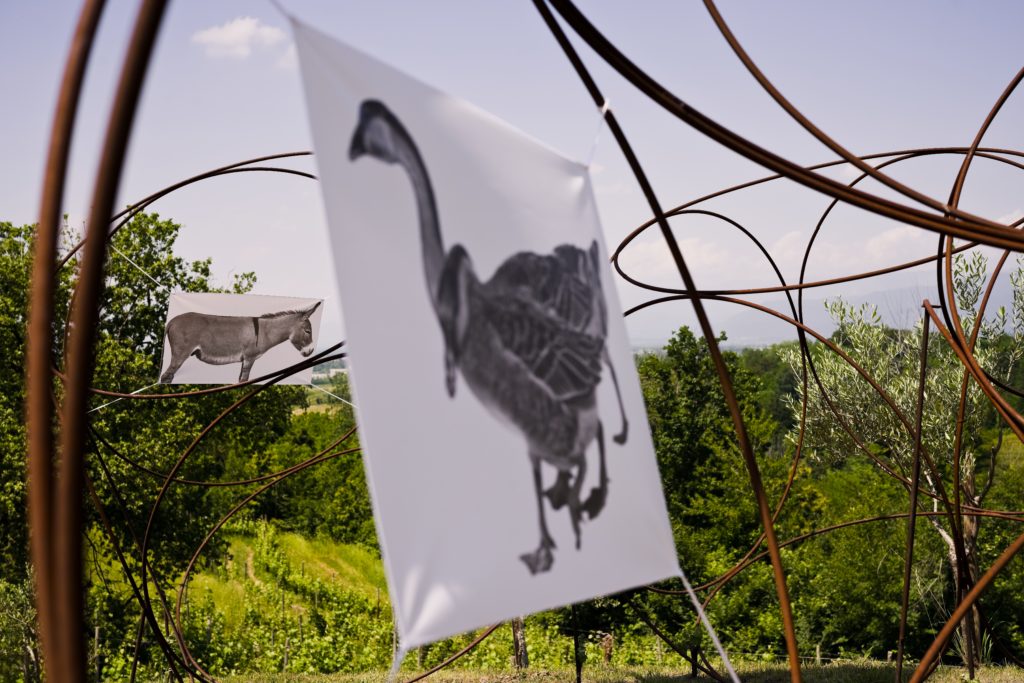
“The Architecture of Intelligence” by Giuseppe Stampone, ph. Dom Mimì
GS: Il “ Centro “nasce come volontà politica di dominio e controllo – il centro ha rappresentato un punto e luogo di potere dove confluivano tutte le rette all’orizzonte (pensiamo allo strumento della prospettiva nella costruzione nel Quattrocento del nuovo mondo a propria immagine e somiglianza ) …il centro nasce con la prospettiva rinascimentale !!!
Perché il Rinascimento, come ormai è assodato, costituisce la piattaforma di lancio di tutto quello che si è sviluppato in seguito. Si passa dalle arti meccaniche alle arti libere, dall’artigiano all’intellettuale. Nel Rinascimento compaiono due strumenti ai quali mi sento molto legato: uno è la prospettiva, l’altro il carattere a stampa di Gutenberg.
Definisco il carattere Gutenberg e la prospettiva le due armi di distruzione totale più pericolose che l’uomo abbia mai creato. La prospettiva toglie l’esperienza empirica all’uomo: ferma lo spazio esistenziale per concettualizzarlo (ferma il “ Tempo – comune “ per organizzare lo “ Spazio – comune “ in pochi fermato il tempo per organizzare politicamente e architettonicamente lo Spazio-comune ) All’interno del quadro prospettico rinascimentale la realtà non è più una narrazione orale tramandata di genitore in figlio, ma è una visione politica dettata dai committenti. Il carattere Gutenberg è la stessa cosa, perché trasforma a proprio piacimento l’esperienza umana…. oggi con l’avvento delle nuove tecnologie ha ripreso forza il Local ( il Vigne Museum ne è un ottimo esempio “) .
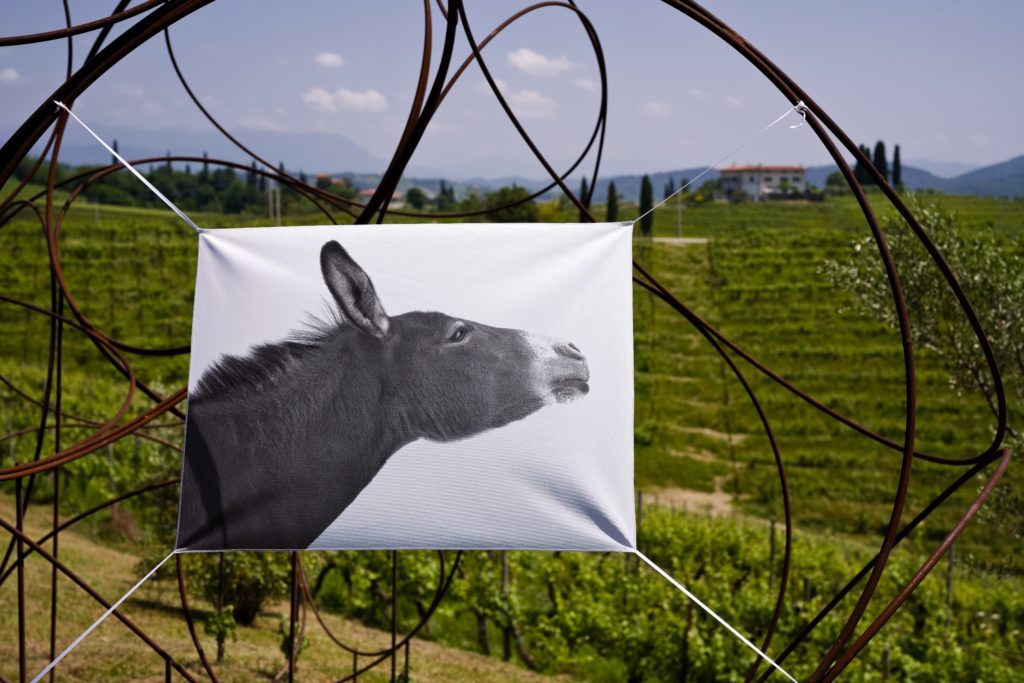
“The Architecture of Intelligence” by Giuseppe Stampone, ph. Dom Mimì
Il Local è l’unica identità che ha tolto il potere e il centro direzionale al” Centro “ ormai troppo omologato è maniera di se stesso a livello globale……
Qui bisogna tornare all’esperienza del “ Local “ dell’identità – unicità -….. chi oggi vuole fare un esperienza come io ho fatto al Vigne Museum ( grazie alla sua storia, identità e visione contemporanea ) deve stare – vivere e respirare quei luoghi….. deve saper ascoltare i rumori di quel luogo, deve relazionarsi con la gente di quel luogo …. qui non siamo più, per capirci, all’interno di un aeroporto di Londra, New York, Dheli, Pechino dove tutti i negozi sono uguali dove tutti i ristoranti simili ( i cose detti non luoghi ) qui siamo nella vostra terra luogo unico e singolare che ha bisogno di ascolto e rispetto se lo si vuol tntare di capire e di coglierne le potenzialità ed insegnamenti .
Qui parliamo proprio di Architettura dell’intelligenza; un’ architettura data dall’esperienza tattile trasfigurante appunto all’interno della stessa struttura inserita benissimo all’interno del territorio ( qui non esiste erezione fallica come potere dittatoriale !!!! Lo capito da subito dalla prima volta che ho visto il museo che qui c’era stato rispetto per la storia di quel luogo ….. come noi abbiamo tentato di fare …. non è più in architettura dittatoriale ( dittatore dello spettatore ) con la sua erezione fallica e il suo centro ….. qui abbiamo cercato di creare un architettura creata dall’esperienza del fruitore che si è dovuto relazionare con quel luogo ( attualità e contemporaneità ) e la sua memoria ( coscienza storica ).
***
“The Architecture of Intelligence”
by Giuseppe Stampone
at Vigne Museum
Project curated by RAVE East Village Artists Residency
In 2014, the year in which the Vigne Museum was constructed on the occasion of the centenary of the birth of the patriarch Livio Felluga, not only was a great example of artistic experimentation in architecture born, but also a story that speaks of nature, of educated people, and of new ways of understanding life by focusing on the most precious asset we have, the Landscape.
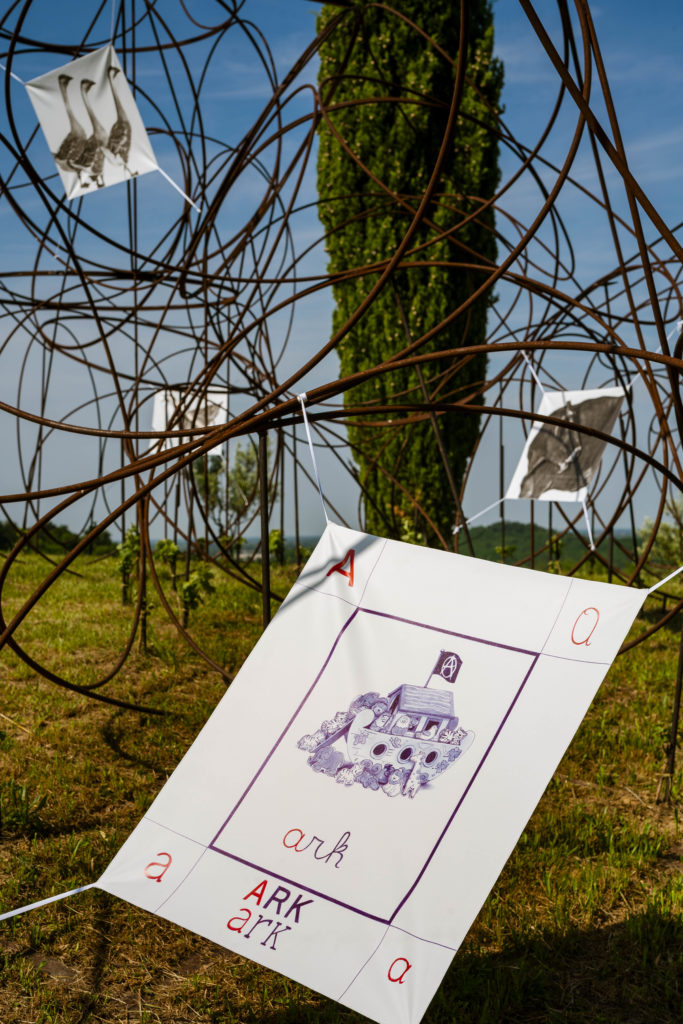
“The Architecture of Intelligence” by Giuseppe Stampone, ph. Dom Mimì
“Architecture of Intelligence”, the work of the artist Giuseppe Stampone in collaboration with the photojournalist Dom Mimì (Domenico Stinellis), produced by RAVE_ East Village Artists Residency and made specifically for the Vigne Museum, fits perfectly into the history of the Vigne Museum and is witness to two fundamental moments:
The inauguration of the Cultural Association VIGNE MUSEUM, the non-profit organisation founded in 2019 to support and continue the route which was taken five years earlier thanks to the support of the Livio Felluga company – thanks to whom it all began.
The recognition, for the first time, of the Vigne Museum as a centre for exhibiting art.
The images captured by Dom Mimì and the designs of Stampone outline a path that travels in and through hoops, working on constant changes in perspective. It is an exhibition which simultaneously overcomes the concept of exhibition by taking on the dimensions of an open-air workshop. This is confirmed by the willingness to leave clear signs, such as ladders and work tools used for the set-up “on site,” which was based upon harmony with both the structure and the surrounding area.
The structures by Yona Friedman are real places and aim to bring about commingling, sharing and connections between the people who visit them and who contribute to the great and endless process that began at the time of their construction.
With extreme consistency Giuseppe Stampone, in “Archtecture of Intelligence”, highlights the concept of network, grids, connections between body and mind, networks between people, links between all of these and the environment in an emotional map that responds exactly to the need for Friedman’s architecture, namely to be filled with experiences. Experiences which are not an end in themselves but which generate other experiences and other networks.
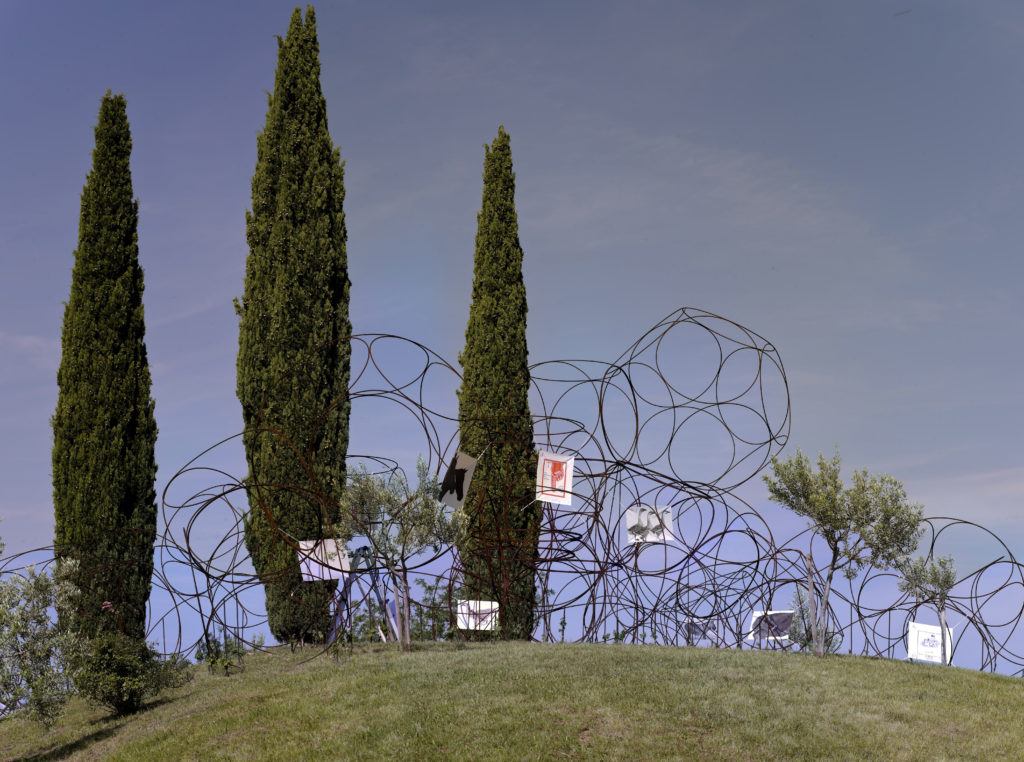
“The Architecture of Intelligence” by Giuseppe Stampone, ph. Dom Mimì
Giuseppe Stampone [ GS ]: In “Architecture of Intelligence” the BODY is intended as an intimate body, the MIND becomes a private place, while NETWORK, TERRITORY AND SPACE become public space for sharing and participation with the memory, contemporaneity and identity of the environment, which unfolds as an emotional map.
Giovanna Felluga [ GF ]: Giuseppe, how do you insert the Vigne Museum into an international cultural map? Do you believe that projects relocated from the large centres today create an equally valid alternative to the institutional and economic system given by the large galleries, biennials, various events and foundations?
GS: The “Centre” was born out of a political will for domination and control – the centre represented both a point and place of power to which all the straight lines converged on the horizon (just think of how perspective was used as a tool in the construction of the new world in the fifteenth century in its own image and likeness) … the centre was born with a Renaissance perspective!!!
Because the Renaissance, as has now been established, constitutes the launch pad for everything that has developed since. One passes from the mechanical arts to the free arts, from the craftsman to the intellectual. In the Renaissance two implements appeared to which I feel very attached: one is perspective, the other the type-face of Gutenberg.
I define the Gutenberg type-face and perspective as the two most dangerous weapons of mass destruction that man has ever created. Perspective takes away the empirical experience of man: he stills existential space in order to conceptualise it (from stilling “communal time” to organise “communal space” it is a short step to stilling time in order to organise the communal space politically and architecturally ) Within the Renaissance perspective framework, reality is no longer an oral narrative handed down from parent to child, but it is a political vision dictated by the commissioners. The Gutenberg type-face is the same thing, because it transforms human experience at will …. today with the advent of new technologies, the Local has regained strength (the Vigne Museum is an excellent example).
The Local is the only identity that has taken power and the centre of direction away from the “Centre,” but now it too has become standardised in much the same manner on a global level……
Here we must turn to the experience of the “Local” identity – uniqueness -….. anyone today who wants to create an experience such as I did at the Vigne Museum (thanks to its history, identity and contemporary vision) must stay – live and breathe those places….. he must know how to listen to the sounds of that place, he must make relationships with the people of that place…. here we are no longer, to understand each other, inside a London, New York, Delhi, Beijing airport where all the shops are the same and all the restaurants are identical (the so-called non-places) here we are in your land, a unique and singular place that needs to be listened to and respected if you wish to understand and grasp its potential and teachings.
Here we speak precisely of Architecture of Intelligence; an architecture created from tactile experience which is precisely transfigured within the self-same structure, perfectly inserted into its environment (here the phallic erection of dictatorial power does not exist!!!!) I understood right away the first time I saw the museum that here there was a respect for the history of the place….. as we have tried to do …. it is no longer dictatorial architecture (the viewer as dictator) with its phallic erection and its centre ….. here we have tried to create an architecture generated by the experience of the user who must make a rapport with the space (topically and contemporarily) and its memories (historical consciousness).

